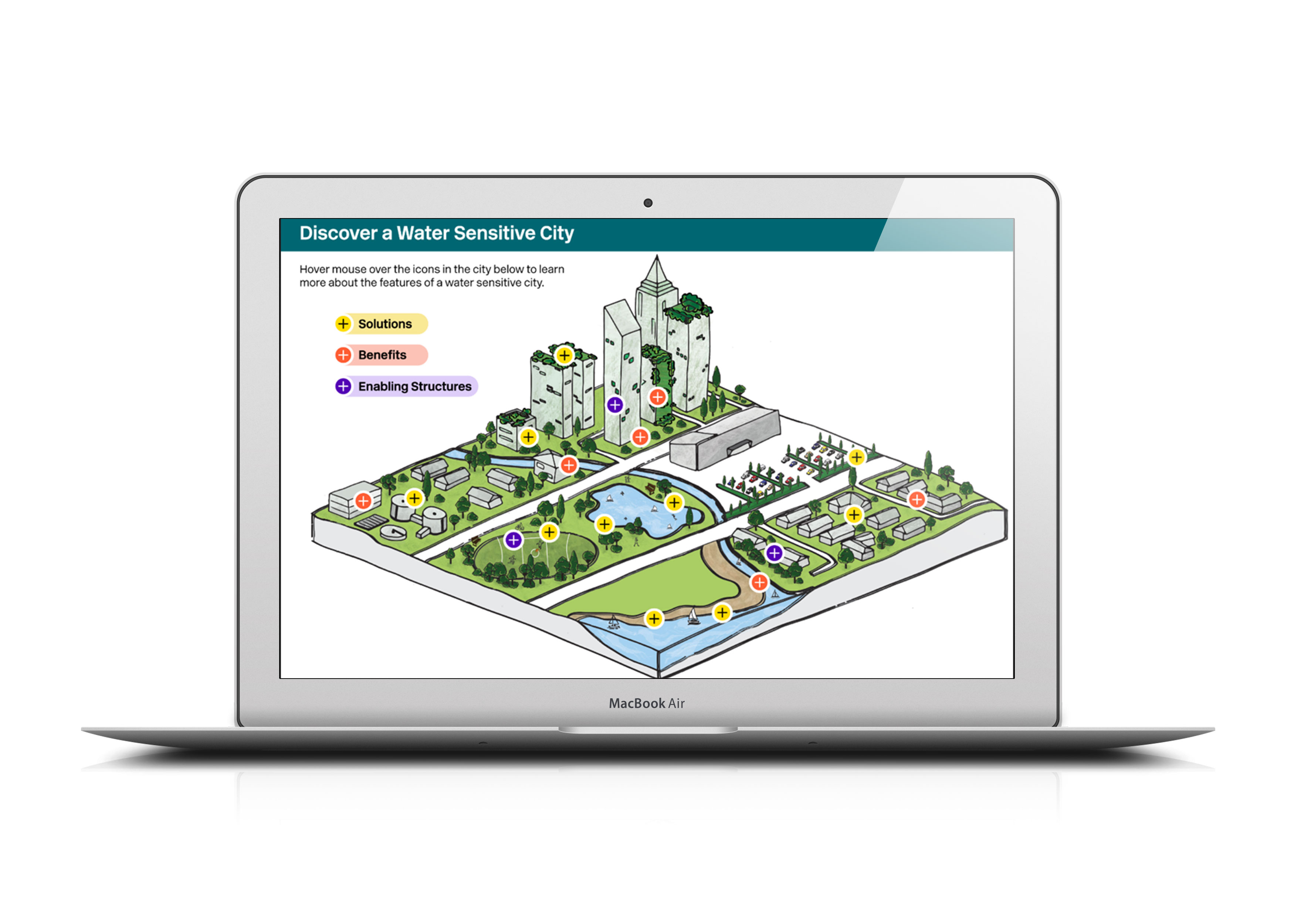Case studies showcase water sensitive city features
Do you want to know how to optimise the use of rainwater and stormwater? Do you want examples of alternative water supply schemes that are up and running? Have you been asked to find examples of where initiatives have improved amenity and the benefits have been measured? Do you need to know how policy and governance have encouraged uptake of water sensitive cities practice?
You might find the answers you’re looking for in one of the 33 case studies the CRC for Water Sensitive Cities recently released. These case studies aim to address questions that industry want answered. Working with project stakeholders, we summarised the key drivers and innovations behind each case study, and most importantly, what we and our project partners learned along the way.
The case studies cover three main categories:
- Solutions—Show me how it can work
- Sydney’s Central Park development (New South Wales) implemented the world’s largest basement wastewater recycling scheme.
- The City of Orange (New South Wales) is using stormwater harvesting on a city scale to supplement its potable supply.
- Southbank parklands (in the heart of Brisbane, Queensland) uses harvested stormwater and filtered backwash from pools and water features as an alternative water supply for irrigation and toilet flushing.
- Josh’s house in Fremantle (Western Australia) demonstrates how water sensitive outcomes can be delivered at lot scale.
- Benefits—Show me the measured benefits
- The Bannister Creek restoration (Western Australia) showed measurable increases in surrounding property prices.
- Irrigating land at Adelaide Airport (South Australia) demonstrated measurable reductions in local temperatures.
- Enabling structures—Show me how to enable change
- Council-led policy changes enabled greater application of water sensitive urban design in new developments in Victoria.
- Water Sensitive Elwood (in Melbourne, Victoria) demonstrated how community can take an active role in co-designing solutions.
Often, the case studies demonstrate multiple lessons. For example, the case study on Aquarevo demonstrates how enabling structures (leadership and influence) can support change and also a range of solutions (including rainwater harvesting and local wastewater management and recycling). Similarly, the Salisbury Alternative Water Scheme (South Australia) case study covers solutions (particularly stormwater harvesting and managed aquifer recharge) and demonstrated benefits (of alternative water supply).
To help users find case studies that are useful for them, we’ve developed an interactive infographic of a water sensitive city. By hovering over the icons in the city, you can learn more about the features of a water sensitive city, and the case studies that showcase them.
We encourage you to have a look at the graphic, and see what you can find. Each case study presents:
- our insights on the project
- the project description
- the drivers
- the innovations
- the outcomes
- the business case
- the lessons
- each project’s transferability
- the project collaborators
- any awards it’s won
- where you can find additional information.
The case study portfolio will evolve over time as we add more examples of great work going on around Australia and world-wide. Stay tuned!
